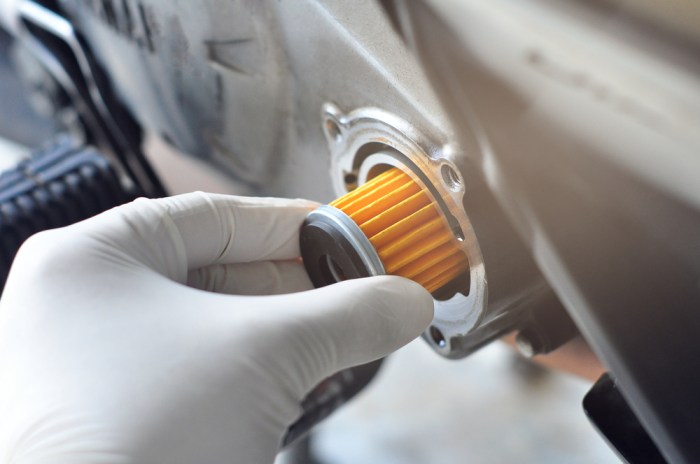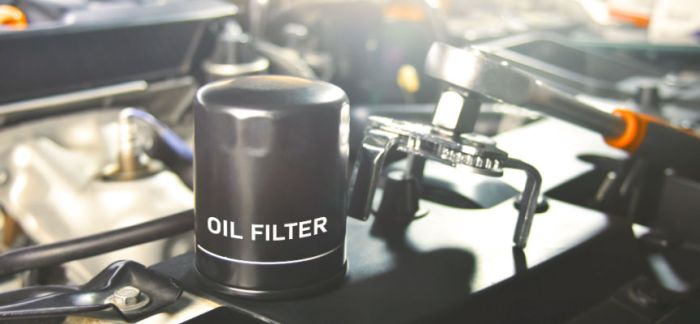Most full-flow oil filters will catch particles as small as, setting the stage for an in-depth exploration of the remarkable capabilities of these essential automotive components. Their ability to effectively remove contaminants from engine oil ensures optimal engine performance and longevity, making them indispensable for any vehicle maintenance regimen.
Full-flow oil filters operate on the principle of mechanical filtration, utilizing a filter media to trap particles as oil flows through them. The filter media, typically composed of cellulose, glass fibers, or synthetic materials, is designed to capture particles of specific sizes, preventing them from circulating within the engine and causing wear and damage.
Filtration Efficiency

Most full-flow oil filters utilize a filtration process that effectively captures and removes particles from engine oil. This process is crucial for maintaining optimal engine performance and longevity.
The filter media employed in full-flow oil filters plays a vital role in particle capture. It is typically composed of cellulose, glass fibers, or synthetic materials, each with varying pore sizes and surface area. As oil flows through the filter, particles suspended in the oil are trapped within the pores of the filter media.
The effectiveness of a full-flow oil filter in capturing particles is measured by its filtration efficiency, which is typically expressed as a percentage. Most full-flow oil filters can effectively capture particles as small as 10 to 20 microns, ensuring that the oil circulating through the engine is free from harmful contaminants.
Types of Oil Filters

There are two main types of oil filters: full-flow and bypass filters.
Full-flow oil filters, as discussed earlier, filter all of the oil that circulates through the engine. They provide continuous filtration and are highly effective in removing contaminants from the oil.
Bypass oil filters, on the other hand, only filter a portion of the oil that circulates through the engine. They are typically used in conjunction with full-flow filters to provide additional filtration.
The choice between a full-flow and bypass oil filter depends on the specific application and engine requirements.
Oil Filter Design
Full-flow oil filters consist of several key design features:
- Housing:The housing is the outer shell of the oil filter and provides structural support for the filter element.
- Filter element:The filter element is the core of the oil filter and contains the filter media that captures particles from the oil.
- Bypass valve:The bypass valve is a safety feature that allows oil to bypass the filter element in the event of excessive pressure drop.
The materials used in the construction of oil filters vary depending on the manufacturer and application. Common materials include metal, plastic, and rubber.
Maintenance and Replacement

Regular maintenance and replacement of oil filters are crucial for maintaining optimal engine performance and longevity.
The recommended maintenance schedule for oil filters varies depending on the vehicle and driving conditions. However, most manufacturers recommend replacing the oil filter every 5,000 to 10,000 miles.
Neglecting oil filter replacement can have several consequences, including:
- Reduced filtration efficiency
- Increased engine wear
- Premature engine failure
Replacing an oil filter is a relatively simple process that can be performed at home with basic tools. The following steps provide a general guide for oil filter replacement:
- Gather necessary materials (new oil filter, oil, wrench, oil pan)
- Locate the oil filter
- Place the oil pan under the oil filter
- Use the wrench to loosen the oil filter
- Remove the old oil filter and discard it
- Lubricate the gasket of the new oil filter with clean oil
- Screw on the new oil filter by hand until it is snug
- Tighten the oil filter using the wrench, but avoid overtightening
- Fill the engine with new oil
- Check for leaks
Proper disposal of used oil filters is important to protect the environment. Used oil filters should be recycled or disposed of at a designated collection facility.
FAQ Overview: Most Full-flow Oil Filters Will Catch Particles As Small As
What is the primary function of a full-flow oil filter?
To remove contaminants from engine oil, preventing them from circulating within the engine and causing wear and damage.
How do full-flow oil filters capture particles?
They utilize a filter media to trap particles as oil flows through them, preventing them from entering the engine.
What types of particles do full-flow oil filters typically capture?
Microscopic particles, including metal shavings, carbon deposits, and dirt.